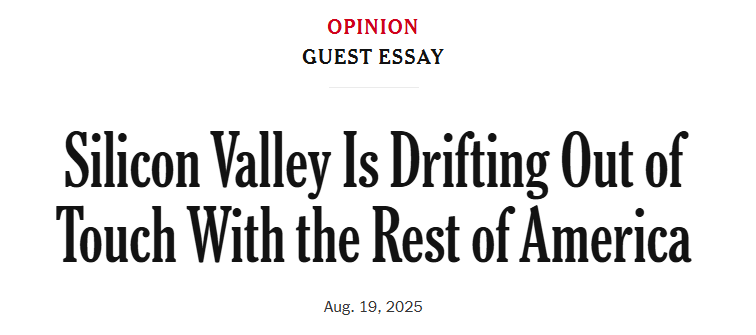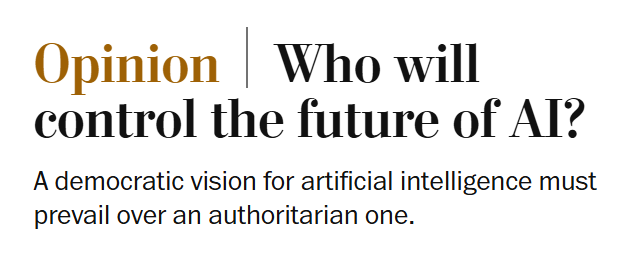Inside the AI Industry's Plot to Kill AGI
They had a dream, then turned nightmare
I think I’ve understood what the AI industry wants. It’s come as a surprise to me, so I figured it’s worth writing an article about it. I will add a disclaimer here: this is one of those times a crazy take has pattern-matched itself before me, but I have only breadcrumbs to back it up. I’d give it a 75–80% chance of being right, but I know it may sound like a conspiracy theory to some. Take it as you will.
Also, when I refer to the AI industry, I don’t include literally everyone, not even all leaders. There are good people doing honest work, but it’s annoying to state this caveat every time, so there you go; now you have no reason to criticize this post, save where your comments allude to the content itself. Enjoy.
It can't be just me who sees this, right? Jensen Huang, Satya Nadella, Sundar Pichai, Mark Zuckerberg, Elon Musk, Sam Altman—leaders of Big Tech and the AI industry (ordered by market cap, not necessarily influence)—are neither reliable nor credible stewards of the dream of artificial general intelligence (AGI).
They’ve always disliked the science-fiction connotations of AGI, which, regrettably, was invented by idealistic morons in the 60s or 50s as the ultimate purpose of the AI field. It wasn’t called AGI back then, of course. The founding fathers felt no need to add the specifier “general”; the entire field was focused on building autonomously intelligent systems that could do what humans do. The term was coined much later, in the early 2000s, when Hans Moravec, Shane Legg, Ben Goertzel, and others realized the field had diverged from the original mission. It’s happening again.
Current leaders are not idealistic scientists (except for Demis Hassabis, founder of DeepMind, the original AGI company). They are people with their feet on the ground and realistic goals like money and power, and influence to keep the US as the sole superpower forever. They are, thus, sane—and free from the influence of Vernor Vinge or Marvin Minsky. That's why they speak of AGI with nonchalance; they will “build it” like a carpenter builds a table; they will “clear it” like a racing car clears the finish line. They show no respect for this 70-year-old unsolved challenge because to show respect, you need to believe the challenge is real in the first place.
But despite their apparent (to me) disbelief, they’ve sworn allegiance to the AGI dream in public and display a surprising familiarity with the concepts (provided they know what they're talking about and not just LARPing; i.e., pretending, used derogatorily). Unfortunately, this exhibit of nerd-targeting charisma—the only charisma they have—is not principled but fickle, which dilutes their interest depending on how the winds of investment blow. So it’s fair to call their renewed anti-AGI attitude a betrayal.
I could be charitable and entertain that the reason they're turning their backs on AGI is that it’s proven hard—not even all the money in the world or the second-largest technological bubble in history did it!—but that’s a poor excuse, and I'm not in the mood for being an entire charity by myself. For seven decades, scientists tried, working in obscurity—intellectually vilified and professionally dismissed—and failure after failure (winter after winter) they endured because they believed. Tech CEOs giving up after having carried the relay for seven short years to no avail, while making huge sums of money both in funding and revenue, stands as an indictment of their beloved motto: high agency is the quintessential quality of the pioneer. They’d deny my accusation, though—you can’t miss a target you don’t set for yourself!
Let me be clear: As I write, highly agentic human beings are undertaking a plan, trying to gaslight you—in press briefings, in written statements, in op-eds published in major newspapers, in startup conferences, in company-wide events. Let me do a detailed recap in this paragraph so that you know what I’m yapping about: They are eroding the original (clear and consensual) meaning of AGI (Microsoft and OpenAI have had a secret definition for years—AGI is an AI that can make “$100 billion in profits”—and a public one—“highly autonomous systems that outperform humans at most economically valuable work”—both divergences from the original). They are treating AGI and “superintelligence” indistinctly and mixing them with familiar stuff (Meta is working on “personal superintelligence,” an oxymoron that’s going really badly, and Jensen Huang confided during a Q&A session at CES 2025 that he’s already “surrounded by superintelligence,” which is his way to collapse the gap that divides the smartest humans and the smartest possible thing into zero). They argue that AGI is not the goal anymore because it “has been achieved internally” or because superintelligence will happen “next year for sure,” as Elon Musk said in a Y Combinator conference in June this year. Conversely, you have Satya Nadella insisting that those claims are “nonsensical benchmark hacking”; he’s terrified that OpenAI will rescind Microsoft's access to its IP, as they agreed upon, if AGI is checked off the to-do list. To him, AGI is this nebulous thing, less a goal than a beacon of hope, forever out of grasp, like morning mist or midnight ghosts.
Whether they want to leave AGI behind, dissolve it into the status quo like one dissolves sugar in water, or pin it up like a perpetual child’s poster of tomorrow, it’s clear what the common denominator of all these seemingly arbitrary re-definitions is: money. Their stated beliefs in AGI are a proxy for making money (which is a proxy for exerting control over a nascent, promising sector). But the nerd science-fiction-loving public that reads Vinge’s novels and Minsky's papers—whose attention tech CEOs initially captured by name-dropping AGI all the time—doesn’t easily accept capricious overhauls to their dreams; don’t you dare stain AGI with the prosaism of capitalistic greed. Having failed so far to penetrate their minds with the dollar sign, our tech leaders are forced to execute plan B: Erase AGI for good. To change its meaning, you need a sort of unspoken ontological consensus; to kill it, you only need power.
Suddenly, Altman says AGI was never a good concept in the first place, and former Google CEO Eric Schmidt writes in the New York Times that AGI is how “Silicon Valley is drifting out of touch with the rest of America.”


I gotta hand it to Altman and Schmidt and the others; as it stands today, a distant and blurry goal, AGI is slowing down America’s imperative: recovering its peak hegemony of the 50s and 60s, when it was affordable to fund all those delusional AGI dreamers because there was no external threat to worry about. Today, however, the AGI mistake is allowing China to position itself as a leader in inventing and manufacturing the strategic resource that AI is, without the annoying “G” in the middle—and thus, without falling victim to impossible quests.

Altman argued in the Washington Post in July 2024 that “A democratic vision for artificial intelligence [America’s] must prevail over an authoritarian one [China’s].” Not once did he mention the damned acronym in the whole piece. And here’s the key paragraph in Schmidt’s NYT essay:
It is uncertain how soon artificial general intelligence can be achieved. We worry that Silicon Valley has grown so enamored with accomplishing this goal that it’s alienating the general public and, worse, bypassing crucial opportunities to use the technology that already exists. In being solely fixated on this objective, our nation risks falling behind China, which is far less concerned with creating A.I. powerful enough to surpass humans and much more focused on using the technology we have now.
AGI was a totem, a way to rationalize huge capital expenditures when they needed a grandiose vision; now it is a scapegoat, the very thing they must jettison to cleanse themselves of past illusions and appear acceptable for Washington and Wall Street once again. They’ll convince the world AGI is valid insofar as it remains a relic of times past, when candid scientists, not ambitious entrepreneurs, ruled AI. It should be a symbol of naive courage and thus only present in mythology, heroic tales, and history textbooks. I have to confess that I wouldn't have imagined they’d dare murder AGI, the sacred heart of the field; its Holy Grail; its “theory of everything”—coined 30 years ago for the very reason they’re trying to kill it today: nothing survives in this world as the passion project of an idealist except behind a cabinet in a museum collection.
Let me end by explaining why this is only happening now, and not years earlier: The field has undergone a “Ship of Theseus” transformation that has changed the stakes and the power dynamics like nothing else in 70 years.
Keep reading with a 7-day free trial
Subscribe to The Algorithmic Bridge to keep reading this post and get 7 days of free access to the full post archives.


